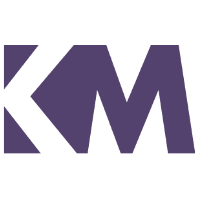‘Content is King’. Writing great for-web content is one of the most influential and organic ways to attract more customers to your online brand. Whether a blog, website, online store or even a campaign landing page, good web content enables you the business or brand owner acquire better leads and more sales right from your online platform- organically.
Is Web Content Really That Important?
According to Internet Live Stats, there are more than 900 million websites in existence, more than 3.5 billion Google searches every day and roughly 350,000 tweets sent every minute. That’s a lot of searches for a lot of online content!
- Always start with keyword research
The right content always drives traffic. Keyword research tells you what topics your audience finds relevant by the queries they type into Google and other search engines such as Bing. This allows you to optimize individual articles and your content strategy as a whole to bring in more traffic.
Keyword stuffing which according to WordStream is ‘the practice of shoving as many SEO keywords onto a page as possible‘ is never okay, in fact, it does the opposite for your search rankings. Google will penalize your site if they find you stuffing keyword into your content. Your page could be demoted in search rankings, or even removed all together!
2. Align your tone to your target audience.
Tone is simply the author’s attitude towards the subject matter of your writing and this needs to be appropriate to the audience and purpose. Don’t try to show how clever or knowledgeable you are – write the way you speak and have a friendly, personal tone that is easily understandable and engages your audience.
3. Give credit to your sources by hyperlinking your sources
When referencing another website’s content, be sure to hyperlink back to that site or article/ blog within that site. It’s good internet etiquette, and you’d want the same courtesy. Always cite your sources. These will also help you get more back-links in the future
4. Write for scanners
Research suggests that only 16% of people read web pages word-for-word. Most people scan. When writing for scanners keep in mind the following:
- Effectively use clear headlines to communicate what you’re about
- Use your sub headings to summarize your key points and take-aways
- Reduce wordiness by using bullets and numbering for your content
Ensure that the reader can understand your most important information by just glancing at your web page.
5. Put your most important information first
Writing for the web is completely different from writing for publications such as magazines, newspapers or essays.
When writing for publications, essays and magazines, the most important point you make is in the conclusion – at the end! On web pages, do the opposite by including prioritizing your most important points to always come first.
Important information to your web visitors is often a simple statement of what you do and why it’s important to them, and once they understand that, they might want to know some more important details by reading through your copy.
6 Include Visuals
Web copy and web design should work together.
Consider how your web page will look to your readers and realize that some of them will be more responsive to visual aids because they will quickly understand what your content is all about.
How do you increase the visual appeal of your web copy?
- Replace text by using photographs, graphics, info-graphics or videos
- Consider using different font sizes in your copy – think about people scanning large text first
- Emphasize credibility from your customers or industry by adding quotes and testimonials
- Play around with highlights, bold text, CAPS, or italics
- Use headlines and sub headlines
- Change paragraphs into easily readable bullet points
For well-optimized content for blog post and online copy for websites, online stores company profiles, proposals and online articles, get in touch with us








Comments (2)
Obila Doe
Our infrastructure management approach is holistic, addressing capacity monitoring, data storage, network utilisation, asset lifecycles, software patching, wired and wireless networking and more.
James Weighell
A hosted desktop solution allows for the delivery of a consistent and scalable IT experience for all users in an organisation. With this solution, users gain access via a desktop icon or link.